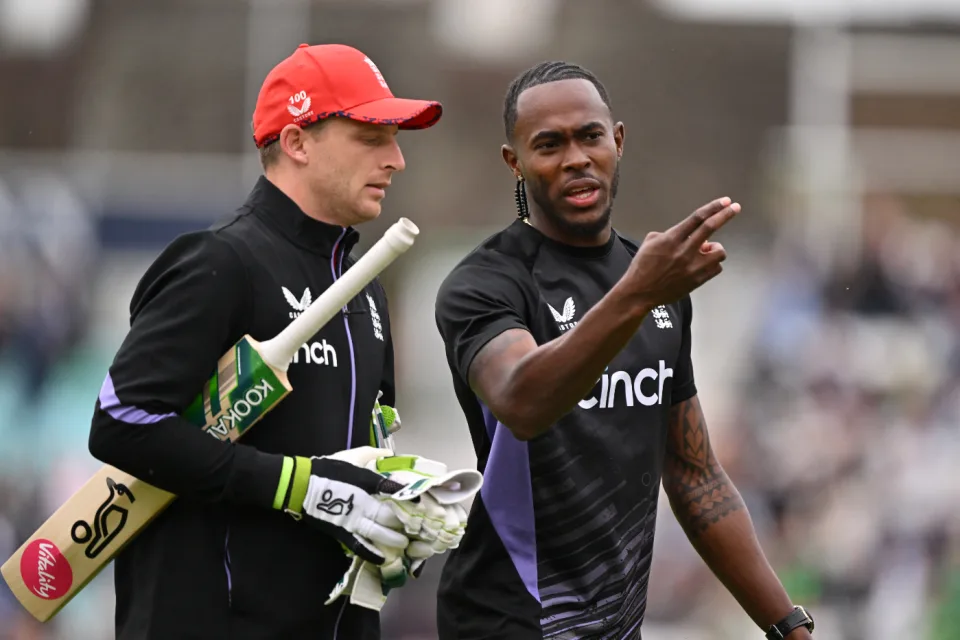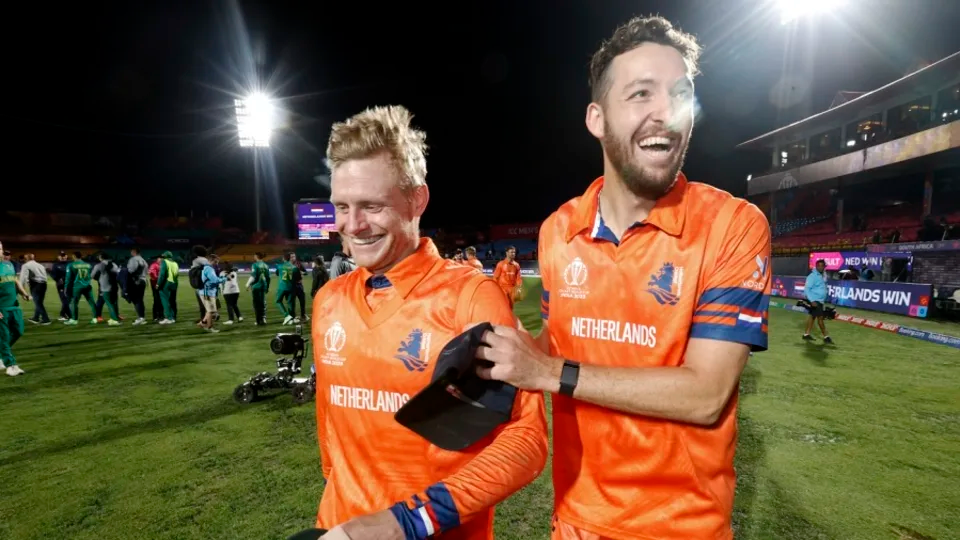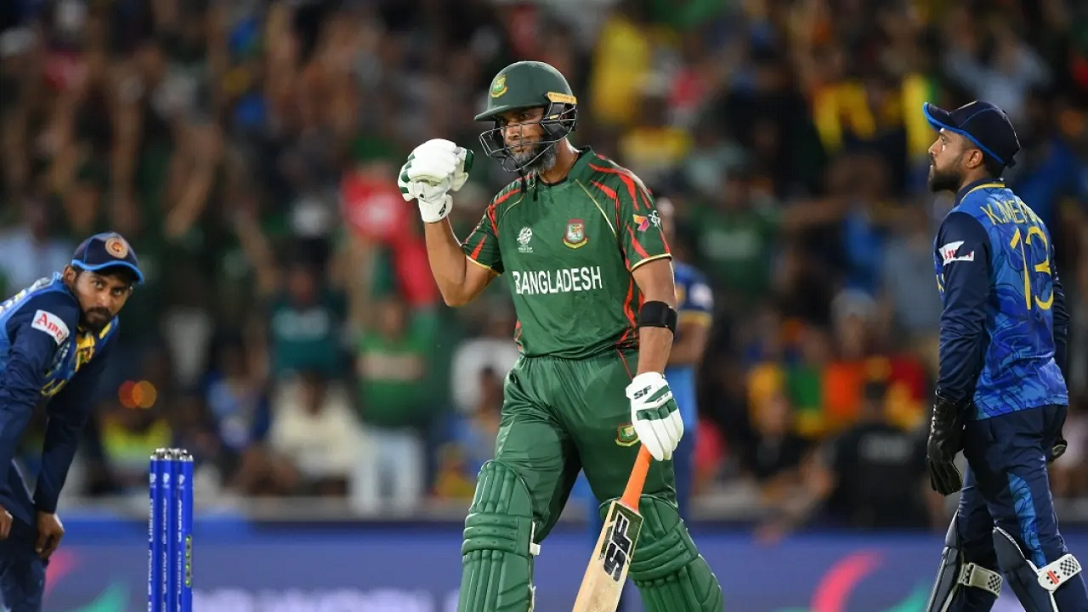Sports
Fijian forwards hold their own against All Blacks

by Rajitha Ratwatte
The first of two tests All Blacks vs Fiji played in the dead of winter in Dunedin at the Forsyth Barr Stadium with the roof up. At least that meant dry conditions underfoot, but the temperature remained below 10 degrees Celsius! Fiji missing just three of their players (two halfbacks) who were trapped in Australia due to Covid 19 but having all their European players back in the fold. The AB’s captained by Aaron Smith with Brodie Retallick back in the second row and Beauden Barret starting at no10. The Fijians had come to PLAY and Retallick soon found that this was a different level to the rugby he had been playing in Japan, having the ball ripped away from him in the loose and the Fijians opening the scoring with a penalty earned in loose play right in front of the posts. 0-3 inside five minutes. Three minutes later the Blacks retaliated off a line out, having had their rolling maul stopped, the left-winger joined the line and a series of great passes by the three-quarters saw Jordie Barret who was in the number 15 jersey score mid-right. Duly converted by his brother Beauden 7–3 NZ ahead. Fiji came right back earning another penalty and having Volavola convert with ease 7-6 with just over 12 minutes played. David Havili playing his first home match for the ABs in the number 12 shirt showed his skills scoring twice in quick succession, once stepping nicely off his left foot and the second time breaking three tackles. Barret senior was able to convert both 21–6. 23 minutes into the game Beauden Barret collected a nasty injury to his eye and face by getting in the way of a flailing boot and had to go off for repairs. The Fiji forwards were playing very well and actually getting the better of the ABs in the loose. The Fijians had the services of the Crusaders forwards coach and he had obviously done a great job. So much so that they scored an unconverted try in the 27th minute and kept many determined attacks by the Blacks at bay until halftime to finish the scoreline reading 21 – 11.
The Abs scored first after the break with George Bridges going over the line from another great move by the backs. David Havili again looping around from first center and forming the overlap. Only a five pointer as Barret senior who was back on the field but looking bruised and battered missing the kick 26–11. Fijians pulled off a great move in front of the line out and caught the ABs blind side defence napping scoring another unconverted try and taking the score to 26–16. At this point around 50 minutes into the game, the ABs replaced their entire front row and Dan Coles came in at no2. Coles went straight into the limelight scoring in what has become his trademark method, off a rolling maul starting off a line out inside 10 meters in opposition territory. Scoreline 31–16. The Fijians continued to put the ABs defence under severe pressure and earned themselves a penalty and a yellow card for David Havili (collapsing a maul with a “hot” ball) who had played an exemplary game up to that point. 31–21 in the 63rd minute and the Blacks one man short. Dan Coles was not intimidated however and scored another of his trademarks that Beaudie was able to convert taking the score to 38–21. Will Jordan who had five tries in last week’s annihilation of Tonga came on off the bench and strolled over the line off a great long pass by Beauden Barret who was coming into his own and realizing that this level was different from the rugby he had been playing in Japan! Barret couldn’t convert, however, and the score read 43–23. The last stages of the game had been reached and the ABs put on their famous spurt with Dan Coles scoring twice more, one “trademark” and the other by pouncing on a loose ball well inside Fijian territory. Coles became the first ABs forward in history to score four tries in a test match and Beauden Barret converted both tries to take the final score to 57–23.
The ABs had always scored over 60 points against Fiji in the past and the Fijians had never scored 23 points against the Blacks.
A much more closely contested game than what was seen last week and even a different level of rugby. Fiji is going to make a welcome entry to the first level of xv a side world rugby. This may also serve as a good call to the coaches and selectors of the stronger sides not to succumb to pressure from the press and choose weaker sides for what is deemed “lesser opposition”. Some sections of the press insinuated that the NZ teams were almost guilty of sin, by winning so comfortably last week against Tonga and Samoa!
The Samoans who gave much better opposition to the Maori All Blacks last week showed their superiority over Tonga by beating them 42–13 earlier in the afternoon after leading by only 6–3 at halftime.
supersubsports@gmail.com
Sports
England face Australia in the battle of champions

The first truly heavyweight clash of this expanded T20 World Cup format comes freighted with both history and subplots. A rematch of the 2010 World T20 final at Kensington Oval, the match pits Jos Buttler’s defending champions – who are aiming to become the first team to retain the trophy – against the Australian winning machine, victors at the 2021 edition and current world title-holders in Test and ODI cricket. And that’s before you throw in the Ashes for afters.
Already there is added pressure on England, after the rain in Bridgetown led to a share of the points in their opener against Scotland (and that having conceded 90 runs from 10 overs without taking a wicket in a tepid bowling display). Lose to their oldest rivals and it will leave their Super 8 prospects open to being waylaid by the perils of net run-rate calculations, or worse.
The Scotland match was the third abandonment in five suffered by England, after a rain-affected home series against Pakistan, which has clearly hampered their readiness for this campaign after almost six months without playing T20 together. It does not take much for a side to click in this format – and England looked in decent shape when they did get on the field against Pakistan – but Buttler will be anxious for things to go their way on Saturday, if only to avoid further questions referencing the team’s disastrous ODI World Cup defence last year.
Australia, under the laidback leadership of Mitchell Marsh would love nothing more than to add to the English sense of jeopardy – having helped bundle them out of the tournament in India on the way to taking the crown. Their head to head record is less impressive in T20 however, with England having won six of the last seven completed encounters, as well as that 2010 final.
Despite a wobble with the bat, Australia avoided mishap against Oman earlier in the week, the experience of David Warner and Marcus Stoinis shining through in difficult batting conditions. Surfaces in the Caribbean – not to mention those games staged in the USA – have already had teams scratching their heads; rather than the “slug-fest” England had prepared for, following a high-scoring tour of the Caribbean in December, it looks as if boxing smart may be the way to go.
Speaking of Warner, this could be the last time he faces up against England in national colours – and another match-winning contribution would likely reduce the chances of them meeting again in the knockouts. On the other side of the card is Jofra Archer, fresh from an emotional maiden outing at Kensington Oval and ready to take on Australia for the first time in any format since 2020. Can Mark Wood fire up England’s campaign, as he did during last summer’s Ashes? Will Pat Cummins be back to harass the old enemy once again? Seconds out, it’s almost time to rumble.
Cummins is set to return after being rested for the Oman game, which saw Mitchell Starc leave the field with cramp. Starc is understood to be fine and could keep his place – which would likely see Nathan Ellis miss out. Marsh is still not fit to bowl, with Australia likely to continue with the allrounder combination of Stoinis and Maxwell to give them cover.
Australia (probable XI): David Warner, Travis Head, Mitchell Marsh (capt), Glenn Maxwell, Marcus Stoinis, Josh Inglis (wk), Tim David, Pat Cummins, Nathan Ellis/Mitchell Starc, Adam Zampa, Josh Hazlewood
The one change England may consider is Reece Topley coming in for Wood, with the expectation that there will be some rotation among the seamers through the course of the tournament.
England (probable XI): Phil Salt, Jos Buttler (capt & wk), Will Jacks, Jonny Bairstow, Harry Brook, Liam Livingstone, Moeen Ali, Chris Jordan, Jofra Archer, Adil Rashid, Reece Topley/Mark Wood
[Cricinfo]
Sports
South Africa up against their bogey team in batter-unfriendly New York

Once is coincidence, twice is a clue, and three times is proof.
To paraphrase Agatha Christie, that is the narrative around South Africa’s meeting with Netherlands at this T20 World Cup.
The Dutch beat South Africa at the 2022 tournament and ended their semi-final hopes in a match where South Africa appeared to be sleep walking, and then beat them again at the 2023 ODI World Cup, where they exposed South Africa’s vulnerability in the chase. If they to do the treble, not only will Netherlands take the lead in Group D, but they will offer conclusive evidence of the threat they pose to Full Members, especially South Africa.
Of course, it will take some doing after South Africa’s opening performance against Sri Lanka, where they reduced their opposition to their lowest T20I total and chased it down in fairly straightforward fashion thanks to the most stable middle-order of their white-ball era. In Aiden Markram, Tristan Stubbs, Heinrich Klaasen and David Miller, South Africa have bankers and big-hitters and, for this match, they also have the advantage of experience. They’ve already played at Eisenhower Park, and have first-hand knowledge that run-scoring doesn’t come easily;Klassen said they are prepared to use their “cricket brains” and play “smarter cricket”.
But the conditions could be good news for Netherlands, who are not naturally a line-up of big hitters and build their innings on a foundation of turning ones into twos. In other words, they tend to take a slightly more conservative approach to batting, which may work well here, but they’ll be wary of the uneven bounce of the surface and will have to come up with plans to counterattack especially against South Africa’s seamers. Their own bowlers were exemplary in Dallas and will look to build on that performance against a line-up that will likely be more proactive than Nepal’s, but who they have managed to keep quiet not once, but twice in the past. Third time’s the charm, they say.
Anrich Nortje’s stunning return to form against Sri Lanka means South Africa may not have to tinker with the bowling combination, and Gerald Coetzee and Tabraiz Shamsi may have to wait their turns to get a game. The batting line-up should be unchanged, with no space for Ryan Rickelton yet.
South Africa: Quinton de Kock (wk), Reeza Hendricks, Aiden Markam, Tristan Stubbs, Heinrich Klaasen (wk), David Miller, Marco Jansen, Keshav Maharaj, Kagiso Rabada, Ottneil Baartman, Anrich Nortje
Conditions in New York may tempt Netherlands to include an extra seamer and they have Kyle Klein in their squad. But it could come at the expense of a shortened batting line-up and they may not want to risk that.
Netherlands: Michael Levitt, Max O’Dowd, Vikramjit Singh, Sybrand Engelbrecht, Scott Edwards (capt, wk), Bas de Leede, Teja Nidamanuru, Logan van Beek, Tim Pringle, Paul van Meekeren, Vivian Kingma
[Cricinfo]
Latest News
Mustafizur, Rishad, Hridoy dazzle in Bangladesh’s tight two-wicket win over Sri Lanka

Nuwan Thushara’s last over brought Sri Lanka screaming back into the match,as he first bowled Rishad Hossain, and then nailed Taskin Ahmed in front of the stumps with a pinpoint swinging yorker. This left Bangladesh eight wickets down, with 12 runs still to get.
However, the experienced Mahmudullah was at the crease for Bangladesh, and despite some further nervy moments, pushed Bangladesh across the line off the last ball of the 19th over.
But this was a match chiefly decided by Bangladesh’s own outstanding bowling. Mustafizur Rahman was the best among them, using shorter lengths and his cutters efficiently, to claim figures of 3 for 17. Rishad Hossain’s three-for through the middle overs also kept Sri Lanka quiet.
Mustafizur was instrumental in Sri Lanka’s downward spiral through the middle overs, which culminated in a crash-and-burn end. Ultimately, their inability to find boundaries, or even rotate strike against good Bangladesh bowling resulted in their downfall. A score of 125 for 9 always seemed poor on a decent pitch, even if their bowlers made a match of it in the end.
Brief scores:
Bangladesh 125 for 8 in 19 overs (Towhid Hridoy 40, Litton Das 36; Dhanajaya de Silva 1-11, Nuwan Thushara 4-18, Wanidu Hasaranga 2-32, Matheesha Pathirana 1-27) beat Sri Lanka124 for 9 in 20 overs (Pathum Nissanka 47, Dhananjaya de Silva 21; Tanzim Hasan Sakib 1-24, Taskin Ahmed 2-25, Mustafizur Rahman 3-17, Rishad Hossain 3-22) by two wickets
[Cricinfo]












